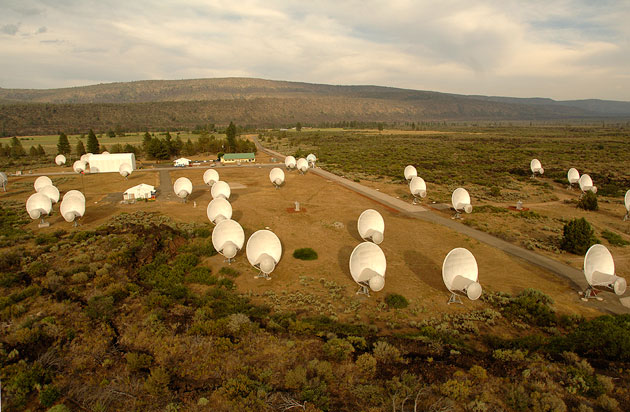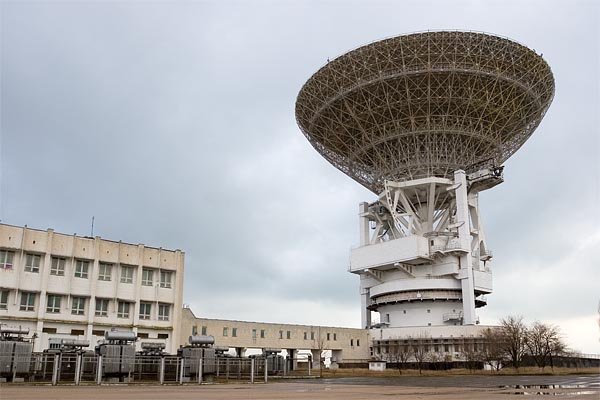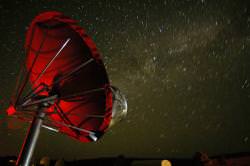In a bold move, astronomers have begun a new search to understand and explain the origin, nature and prevalence of intelligent life in the universe. Called WETI, which stands for Wait for Extra Terrestrial Intelligence, the institute employs an entirely novel approach to achieve its goals. Instead of actively searching for extraterrestrial intelligence, the idea is to simply wait: Wait until the ETs find us. “Waiting is a notoriously underappreciated method in our efforts to search for extraterrestrial intelligence,” says the WETI website. “It is cheaper and less stressful than any other type of research. It is also environmentally friendly and does not cause global warming, terrorism or nuclear conflicts.” WETI’s overall objective? To set a new gold standard for scientifically meaningful waiting, and to provide humankind a new purpose as they wait.
The work of WETI was recently highlighted at the Dot Astronomy Conference on Networked Astronomy and the New Media. WETI officials overcame several problems, and were able to present a poster at the conference. Then they went out for drinks, presumably to make the waiting more enjoyable.
The poster introduces the very foundations of WETI, which includes the breakthrough “Brake Equation.” See the poster for more details.
In the near future, whenever they get around to it, WETI will provide a downloadable computer program that will make use of the idle time of your computer to very efficiently wait in the background. “Modern computers can wait several million times each second,” says WETI. “By exploiting this currently unused waiting potential we will collectively create the biggest waiting power ever applied to any problem on earth.”
I contacted the WETI Institute for more information and was pleasantly surprised that I did not have to wait very long for a reply. An Aleks Scholz, the Deputy Chief Executive Officer of WETI, responded to my inquiries. When asked about the response WETI has received thus far, Scholz said,” Generally positive, with a slight inclination of being confused at first, plus occasional cases of consternation. So far, however, there were no medically relevant problems related to the responses to WETI.”
The history of the WETI Institute appears to be long and muddled. “We are still working on tracking down the roots of our organization,” said Scholz. “Most of us, however, believe that it was Knarps Hoselton who originally provided the stimulus for the WETI movement with his inspirational piece of research ‘On Some Philosophical Implications of Throwing Small Stones into a Big Body of Water’ in the early 80s. Today, Hoselton is Senior Astronomer and holds the Bruno Moravetz Chair Emeritus at the WETI Institute.” In more recent years, Scholz himself, an astronomer at the University of St. Andrews, picked up on Hoselton’s revolutionary ideas and suggested combining them with networking technology. This was the beginning of the WETI Institute.
When asked how long we may have to wait for results from this new initiative, Scholz said, “We prefer to see each day of WETI as a ‘result’, providing us with one bit of information about the nature of extraterrestrial intelligence– they are somewhere else. The non-presence of aliens on planet Earth is as useful for science as their presence would be. We will not accept any notion that waiting is only useful if, finally, something happens. Instead, we consider waiting a fulfilling scientific method in its own right.”
So, is this a joke? Maybe. Or maybe not. “It seems appropriate to ponder the actual usefulness of WETI” says the WETI website. “Where do we come from? Where do we go? Can we have coffee in between?” Well, thanks to the WETI Institute, the process of answering these questions turns into a social experience – a global, conscious waiting process. With WETI, everyone at least knows that they are waiting. This provides new purpose to humankinds’ seemingly eternal waiting. We can all now wait with fierce determination.
If you find yourself not very adept at waiting, Scholz offered a few tips. “With our expertise, we can suggest a number of things: The long-established technique of fiddling your thumbs, for example, is a good start. You might also want to take a sheet of graph paper and fill in all the squares with a soft pencil. When you are finished, you could arrange for a nice cup of tea, just for a change. Finally, procrastination is always a valid option. Surely there is something you should be doing right now. Concentrate your energies on not doing it.”
In the words of Galaxy Zoo’s Chris Lintott, “This is both brilliant, and completely mad.”
Update: You can now join WETI’s “think tank,” the Effortless Action Committee. When you do you can receive an attractive certificate suitable for framing immediately — no waiting!











